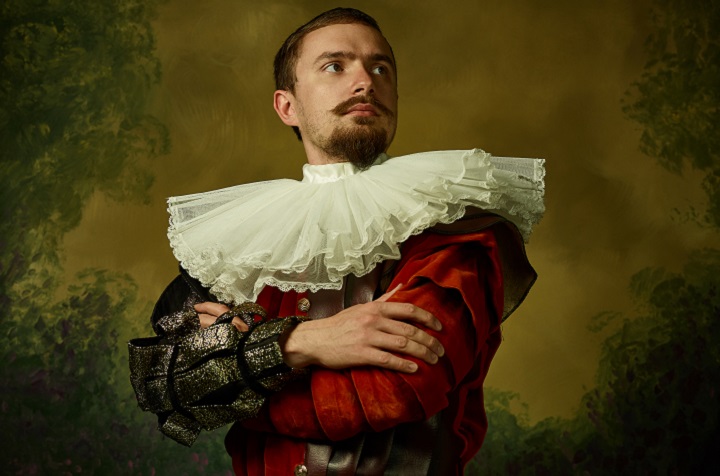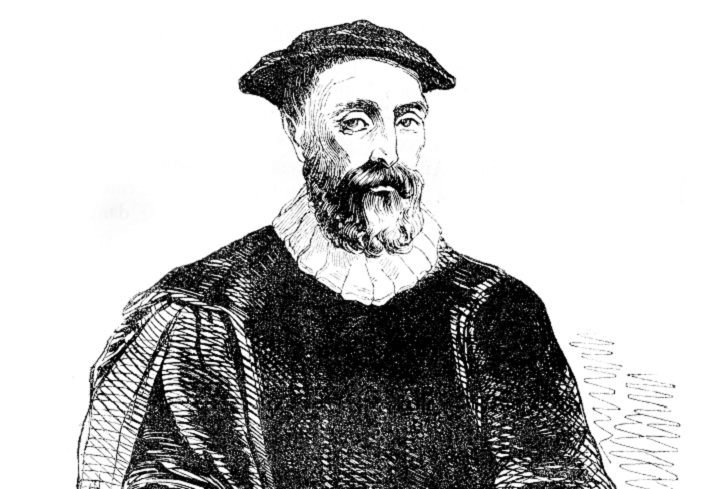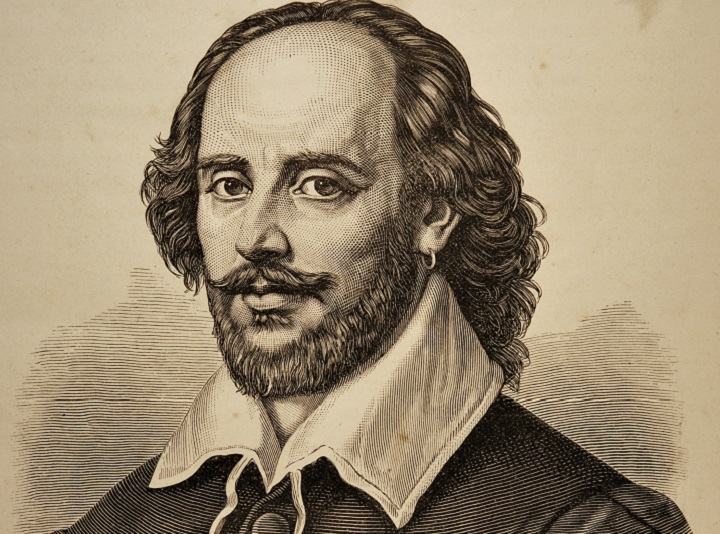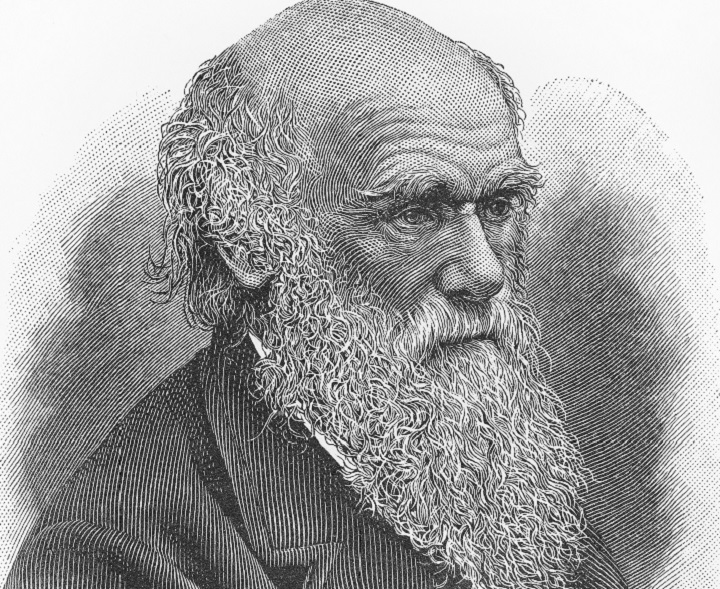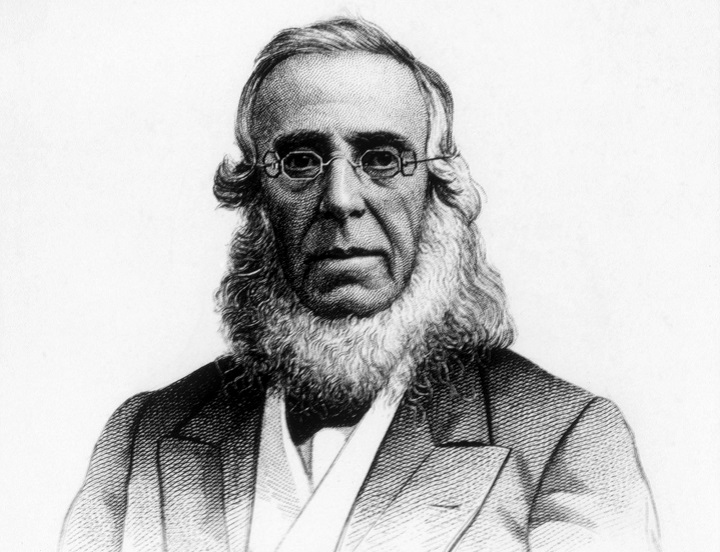Facial hair has been growing and evolving for centuries, from mutton chops, the Van Dyke beard style, the soul patch, and the chin puff to the age of the hipster beard. We explore the social, cultural, and even religious significance of beards throughout history. Let’s dive in.
Table Of Contents
- Beard History
- Significance of Beards in History
- 19 Top History Beards
- John Knox
- Edward III
- Otto the Great
- Peter Cooper
- Ambrose Everett Burnside
- William Shakespeare
- Claude Debussy
- Leonardo Da Vinci
- Horace Greeley
- Franz Joseph I
- Charles Darwin
- George V
- Abraham Lincoln
- Karl Marx
- Sigmund Freud
- Nikola Pašić
- Alfred Von Tirpitz
- Ernest Hemingway
- John “Grizzly” Adams
- Santa
- Merlin
- Gandalf The White
- Zeus
- Uncle Sam
- FAQ
Beard History
The history of beards dates back to prehistoric times when men grew beards for warmth, protection, and as a sign of intimidation. Celtic tribes held facial hair to such high standards that Otto the Great often swore by his beard whenever he had something of great importance to say.
In ancient India, beards were revered more than anything else. Long manes stood for wisdom and dignity, plus strength and courage. In the same cultures, men would pledge their beards when paying debts.
During the Middle Ages, a beard was very personal, and touching another man’s beard was regarded as offensive and would even be ground for a duel.
In ancient Egypt, beards symbolized power, wealth, and importance in society, and powerful men would dye and intertwine their beards with gold thread. Ancient Greek and Mesopotamian men also dressed their beards.
Enter the Vikings! Viking men were fearless warriors who used their beards to strike fear into the hearts of their opponents. A beard displayed a knight’s honor and virility during the Middle Ages.
On the other hand, the Catholic clergy would shave their beards as a symbol of celibacy. Nowhere is the significance of beards seen better than in military application. The 18th and 19th centuries saw French troops sport different types of facial hair for various roles.
The British Army followed this trend and mandated their soldiers to keep mustaches from 1860 to 1916. Today men from all walks of life are bringing back the glory of the beard.
Significance of Beards in History
What was the significance of the beard in history? During the Dynastic period in Egypt, beards were frowned upon and considered a reserve of the low-class population and a sign of animal tendencies.
So widespread was this assumption that some men even went as far as removing their eyelashes. Beards would gain more significance in the years that followed.
For instance, in ancient Greece, beards were considered a sign of wisdom, masculinity, and manhood and were only cut as a form of punishment and during mourning. Ancient Romans who wanted to stand out from the Greeks opted to shave their faces clean.
This was so important that religious ceremonies were held when boys shaved for the first time. In ancient Germany, soldiers were mandated to keep their beards and only shave them off if one killed an enemy or avenged a defeat.
In Europe, knights maintained their beards as symbols of honor and masculinity to the disapproval of King Henry VIII and Queen Elizabeth. While King Henry kept his beard, his subjects didn’t enjoy that privilege and were required to pay a tax for growing one.
Fast forward to 1900, America and the beard trend had died down. Soldiers fighting in WWI, for instance, couldn’t keep their beards because the hair would interfere with gas masks. This resulted in a no-beard trend that continued until after World War II.
Beards finally made a comeback and were popular among hippies and the Beatles. In politics, beards were historically associated with protests and opposition to women’s rights, and many politicians opted to be clean-shaven. However, some politicians embraced facial hair.
19 Top History Beards
John Knox
The clergyman is recognized for leading Scotland’s Reformation and founding the Presbyterian Church of Scotland. Knox maintained a long beard that appears to reach his chest in most photos. You need the right tools, including a beard comb, to rock such a beard.
Illustration from: Morphart Creation / shutterstock.com
Edward III
Edward III was the King of England and Lord of Ireland. He kept a long, well-trimmed beard to match his shoulder-length hair.
Otto the Great
When people talk about born rulers, Otto the Great is at the top of that list. The German king and Roman Emperor accomplished many great things, but perhaps he is most remembered for swearing by his beard whenever he was about to make an important decision.
Peter Cooper
Peter Cooper was a US presidential candidate whose claim to fame was America’s first steam locomotive, Tom Thumb. Cooper is also said to have rocked a full-blown, bushy beard that somehow resembled a lion’s mane.
Ambrose Everett Burnside
The American soldier and politician was a railroad executive, inventor, and industrialist who became the first president of the National Rifle Association. Burnside rocked a monster mutton chop, and the popular opinion is that the term “sideburns” was coined from his family name.
William Shakespeare
According to some theories, one of the greatest writers to walk the face of the earth is a myth since there has never been an actual photo proof of what the man looked like. Still, we can’t help but imagine him with a short beard and a mischievous mustache.
Illustration from: vvoronov / shutterstock.com
Claude Debussy
Of rockstars and beards, Claude Debussy was a French composer whose works include the Préludes and Études. His full beard gave him a somewhat mysterious rockstar vibe and probably set the stage for headbangers who would follow.
Leonardo Da Vinci
Da Vinci was a man of many talents and mastered painting, sculpting, engineering, architecture, music, literature, and even mathematics. He had a magnificently flowing long beard that almost reached his chest.
Horace Greeley
The world of journalism is not short of great individuals, and Greeley is one of them. The New York Tribune founder and editor had a distinct neckbeard that he sometimes tucked in or left to cover his collar.
Franz Joseph I
Franz Joseph I had the longest reign in European history as Austrian Emperor and Hungarian King. Though his beard wasn’t as long as his reign, he kept a distinctive beard that covered everything but his chin.
Charles Darwin
Darwin’s contribution to science and evolution can never be overlooked. Born in England in the 1800s, Charles Darwin worked as a biologist, geologist, and naturalist. In an age of Victorian hairstyles, the man is known to have sported a snow-white beard that went past his collar.
Illustration from: Nicku / shutterstock.com
George V
George V held dual titles as the United Kingdom and British Dominions king and Emperor of India. As far as Irish beard styles go, George V had a strong mustache and beard game.
Abraham Lincoln
Of US presidents with beards, Abraham Lincoln had the most notable beard in US history. For Abraham Lincoln, he had to decide on a goatee vs beard after an 11-year-old girl wrote him a letter encouraging him to grow a beard to win votes.
Ultimately, Lincoln went with a goatee that worked well to complete his brooding look.
Karl Marx
Born in Germany in the 1800s, Karl Marx is best known for his Marxism theories on politics, society, and economics. He has a full-blown beard to go with his bushy hair.
Sigmund Freud
A feud is recognized for his contributions to psychology as the founder of the clinical method of psychoanalysis. Feud’s beard was a beauty that he kept neatly trimmed. You can combine such a beard with a classic curly mullet.
Illustration from: Everett Collection / shutterstock.com
Nikola Pašić
The prominent Serbian and Yugoslav politician served as Prime Minister in the Kingdoms of Serbia and Yugoslavia. Pašić maintained a long beard that went past his collar.
Alfred Von Tirpitz
Tirpitz is recognized for his service in the German Imperial Navy. He kept a French Fork beard and a modest handlebar mustache.
Ernest Hemingway
Hemmingway was a writer and journalist who earned himself a Nobel Prize in Literature. Ernest Hemingway also developed the Iceberg Theory, a writing style that greatly influenced much of 20th-century fiction.
He maintained a rugged and striking full beard that emphasized his handsome features. You can achieve this look with a beard brush and styling products.
John “Grizzly” Adams
He is known as the tamer and trainer of grizzly bears hence the name. Adams kept a feral yet impressively groomed beard.
Santa
It’s hard to think about Christmas without thinking about Santa Claus. He is depicted with a thick, bushy white beard and an equally thick mustache.
Merlin
Merlin is said to have been the most powerful wizard who ever lived. He had an impressively long, bushy beard with his long hair.
Gandalf The White
Formerly known as Gandalf the Grey, he had a way with magic. Gandalf is shown to have a long flowing white beard, long white hair, and impressively bushy eyebrows.
Zeus
Greek gods are known for their beauty, but only Zeus is depicted to have a long potent beard.
Uncle Sam
Uncle Sam was initially a bare baby-faced cartoon until 1869, when beards grew in popularity, and the cartoonist Thomas Nast added his iconic goatee.
FAQ
Who has the best beard in history?
It’s hard to pick a single candidate in a pool of great men with great beard styles. From Otto the Great to Abraham Lincoln, all these men listed above shaped the beard world.
Did prehistoric humans have beards?
Yes, prehistoric people had beards that scientists believed helped keep them warm and protected their faces from trauma.
What is the history of beards?
Beards have had quite a history. Early humans grew beards for warmth and intimidation. Today, beards symbolize masculinity, fashion, royalty, and status.
Did people have beards in the 1800s?
The 1800s marked a beard boom age in Europe. British soldiers were allowed to grow beards which were regarded as a mark of heroism when one returned home.
Vinnie is one of the members of the Beardoholic writers team. He’s also a barber and hairstylist for 15 years now and he has a kick-ass beard of his own, so he surely knows what makes a magnificent beard and hair and how to achieve them. He’s our go-to guy for all the latest beard and hairstyle trends and he always has a tip or two on how to grow and style a thick beard fast.

